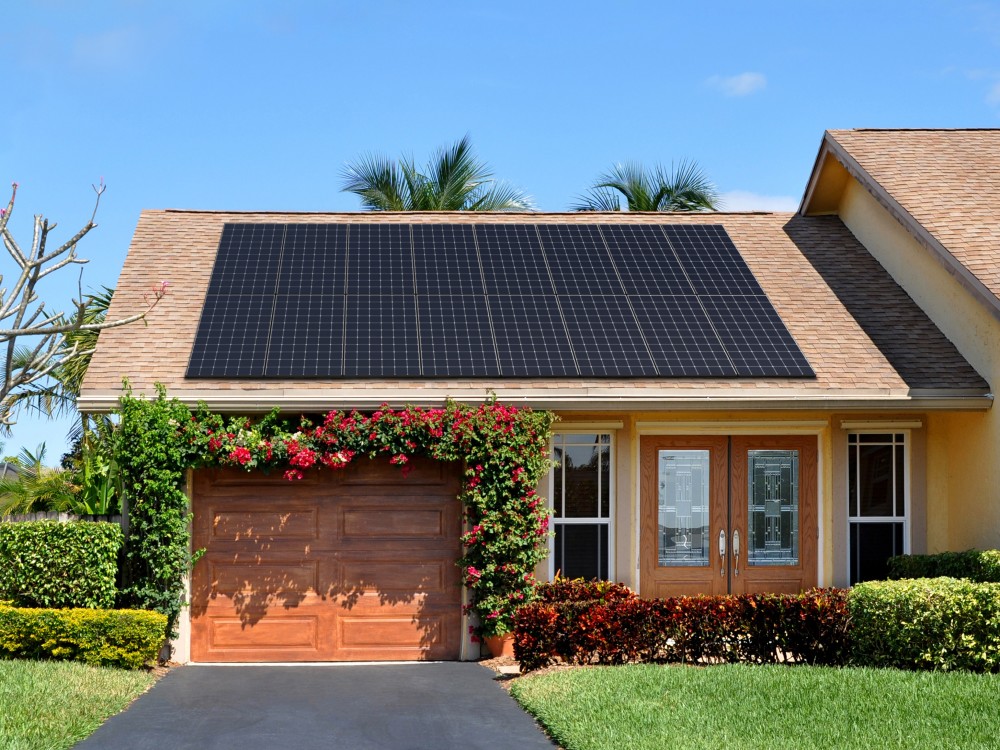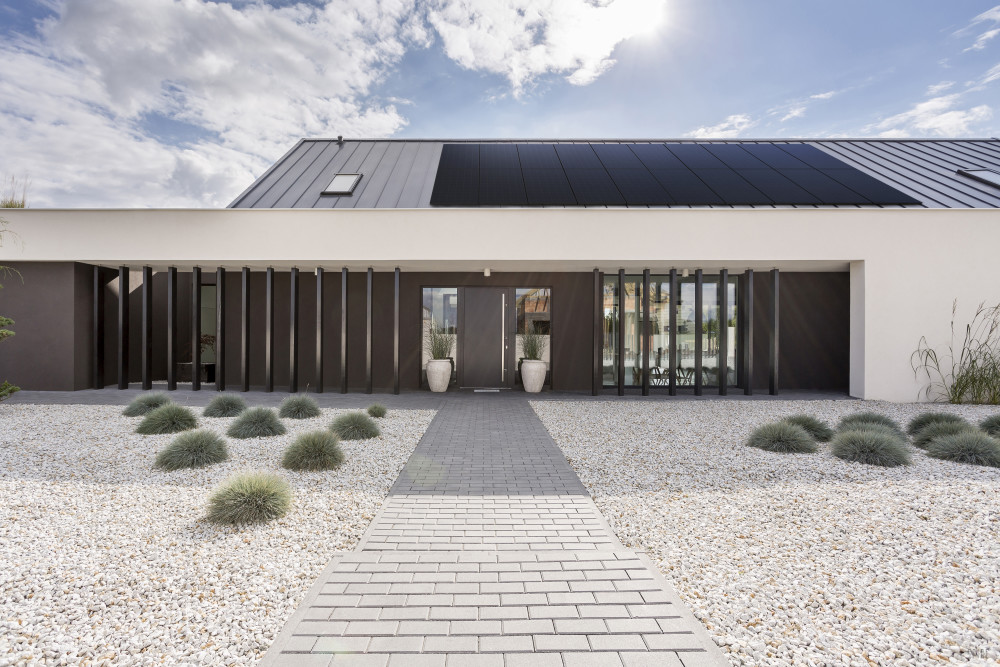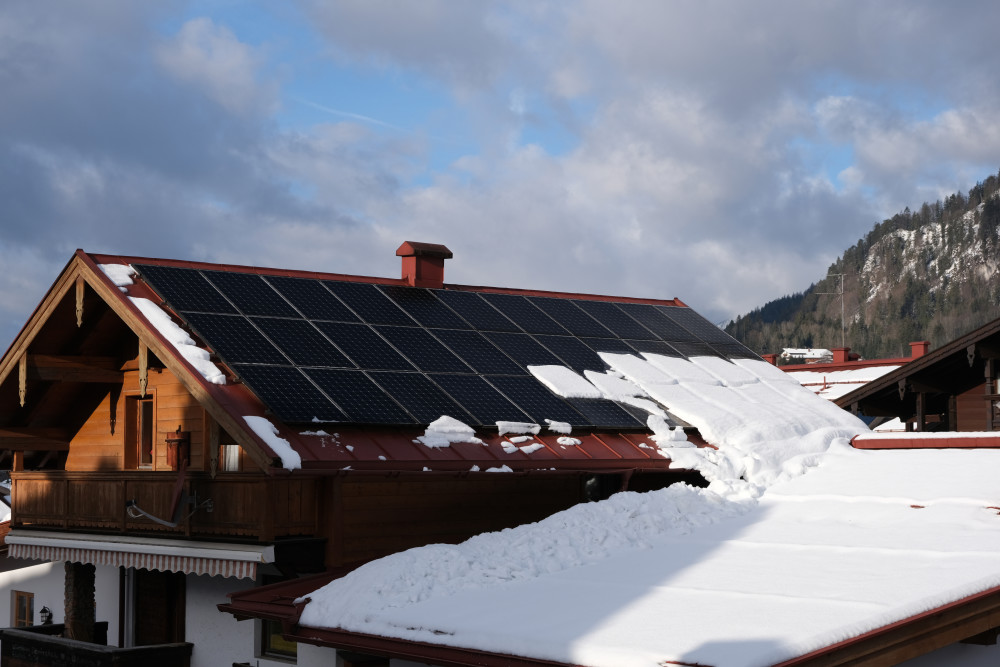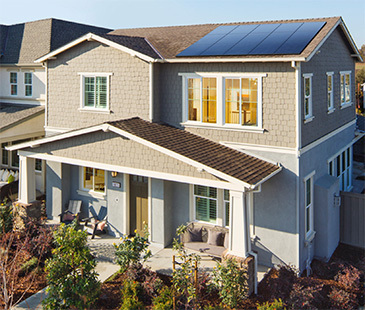Are Weather Conditions Relevant for Solar Panel Performance?
Required weather conditions for solar panels
In this article, we’ll explore the relationship between weather conditions and the performance of your solar panel system. We explain how sunlight, temperature, wind, humidity, snow, and ice can impact solar panel efficiency. Generally, sunny, clear days, moderate temperatures, and the absence of extreme weather conditions will be best to maximize efficiency, but it’s not always as simple as that.
Does weather affect solar panel performance?
Solar energy is set to continue its surge in popularity through 2023 as one of the more readily available renewable energy sources. The U.S. government has continued its general trend toward renewable energies to meet its clean energy goals, while federal and state policies increasingly encourage homeowners to switch as our nation looks to reduce carbon emissions and move away from finite fossil fuels.
Here are a few facts and figures from the Solar Energy Industries Association (SEIA) that demonstrate the trend toward renewable energies:
The U.S. market for solar has grown by an annual average of 42% over the past decade.
The solar industry hopes to generate 30% of all U.S. electricity by 2030.
The Solar Investment Tax Credit (ITC) was introduced in 2006. Since then, the industry has grown by 200%.
All signs point toward a boon for solar energy.
Yet, there is still a lot of misinformation and confusion surrounding solar energy and the efficiency and reliability of solar panels. One area that many Americans aren’t sure about is the effect of weather on solar panel performance.
We’ll address that confusion in this article as we examine the role of weather conditions in solar panel electricity generation and performance. We’ll explore the role of:
Sunlight
Temperature
Wind
Humidity
Snow and ice

How does sunlight affect solar panels?
It’s well known that solar panels convert sunlight into electricity, but what are the details of how that process works? Read on as we give an overview of the process.
How do solar panels convert sunlight into electricity?
The photovoltaic cells contained within the panels are the key. These cells are made from a semiconductor material, typically silicon, which has a property known as a 'band gap.' When sunlight, or more specifically, photons from the sun, strike these cells, they energize the electrons within. This energy allows the electrons to overcome the band gap and create an electric current. This current is then harnessed and directed elsewhere for use.
What is the optimal amount of sunlight for solar panels?
Solar panels ideally require a minimum of five hours of direct sunlight daily to maximize solar panel efficiency. Yet, the weather is a fickle factor affecting solar performance, and many places known for inclement or cloudy weather across the U.S. can still be fantastic candidates for solar panels. Clouds can even enhance the performance of solar panels by reflecting or magnifying even indirect sunlight.
How does the amount and intensity of sunlight affect solar panels?
Generally, the electricity output of photovoltaic panels is directly proportional to the intensity and amount of sunlight they receive. The more intense the sunlight, the greater the energy output.
This means that you’ll get the best results from positioning your solar panels on a roof facing true south (if you live in the Northern Hemisphere) and at a tilt between 30 and 45 degrees. Solar panels produce the most electricity when placed perpendicular to the sun. In many cases, this angle equals the latitude at which you live. This placement gives your solar panels the best chance of receiving direct sunlight for the longest amount of time.
Other factors can influence the amount and intensity of sunlight your solar panels receive:
Location - Sunnier regions naturally receive more sunlight than those in cloudy or foggy areas and tend to perform better. However, it’s critical to remember that a consultation with a solar expert will help you assess how well panels could perform in your specific circumstances.
Season - The sun's angle changes with the seasons, affecting the amount of sunlight your panels receive. There are also shorter daylight hours in winter, for example.
Time of day - Solar panels generate the most electricity when the sun reaches its highest point in the sky, meaning you’ll generate less electricity in the mornings and evenings.
Shading - Even a small amount of shading on a panel can significantly reduce its output. Trees, nearby buildings, or other objects can cast shadows that reduce the amount of sunlight reaching the panel.

How does temperature affect solar panels?
In addition to sunlight, the intensity of the sun’s heat will affect your solar panel's performance.
Although sunlight is crucial for solar panel operation, high temperatures can reduce their efficiency. Solar panels generally work best at a moderate temperature, around 25°C (77°F).
Elevated temperatures can change the properties of the semiconductors used in solar panels. This often leads to a slight rise in current but can result in a significant voltage drop. Also, extremely high temperatures can damage the cells, reducing their operational lifespan.
Since a considerable portion of the sunlight that hits the cells converts into heat, effective heat management is essential for enhancing solar panels' efficiency and longevity.
To keep your solar panels in good condition, ensure they have adequate ventilation and are cleaned regularly to prevent dirt from accumulating on their surfaces. If overheating is still a concern, consider investing in a cooling system. Taking preventive measures to manage the heat of your panels will improve their output and reduce how often they need to be maintained.
How does wind affect solar panels?
Wind can play a surprisingly relevant role in solar panel performance, with both negative and positive consequences.
While a gentle breeze can help cool solar panels, improving their efficiency, strong winds, especially during storms or hurricanes, can put their structural integrity at risk.
Unfortunately, in some areas across the country, high winds are a regular occurrence. This means it’s important that solar panels are resilient to intense winds, heavy rainfall, and other extreme weather conditions. While there isn't a specific hurricane classification for solar panels, most are engineered to endure wind speeds up to 140 mph. You can improve solar panel safety during installation using various methods, such as fasteners, through-bolting modules, or a three-frame rail system.
Also, roof-top solar panels may be more vulnerable to wind damage than panels mounted on the ground due to increased exposure to high winds and gusts.
How does humidity affect solar panels?
Humidity can have mixed impacts on the performance of solar panels, and it's a factor that requires close attention, especially if you live in a region where high humidity levels are a regular occurrence.
High humidity often leads to increased cloud cover and rainfall, which can sometimes decrease the amount of sunlight reaching the panels throughout the day.
As humidity generally refers to water in the air, it can also impact panels in three ways:
Causing water droplets to form on the panel's surface.
Causing dirt and dust to stick to the panel’s surface.
Increasing the likelihood of weather-related damage, such as rust, mold, and mildew.
These factors can negatively affect the panels' performance and longevity.
But, when it comes to solar energy production, humidity can also play a more positive role. Water vapor in the air can scatter sunlight, causing it to hit the panels from different angles, potentially increasing the total irradiance (the amount of solar power you can produce per unit.)

How do snow and ice affect solar panels?
It may seem counterintuitive to think of solar panels working well in cold weather with snow and ice. But with increased reflectivity of sunlight off snow can actually help make solar panels even more efficient.
Cooler temperatures can also be a benefit with solar panels, though only to a point. Any snow or ice on the panels themselves can freeze and expand if the temperature drops below freezing. This can damage the solar cells or the panel structure.
There are two other potentially negative consequences of snow or ice on your solar panels:
Reduced sunlight exposure:
When snow and ice accumulate on the surface of solar panels, less sunlight reaches the solar cells, resulting in a reduction in their energy output.
Structural damage:
Accumulated snow and ice add weight and stress to the solar panel structure. Too much weight could potentially damage or collapse the panels.
Keeping an eye on your solar panels with regular cleaning and maintenance, especially in winter, can help prevent these potential effects.
What are the optimal weather conditions for solar panels?
Advances in solar technology mean panels are becoming more and more efficient, making the quest for the perfect conditions no longer necessary to generate the electricity you need.
That’s why homes generally need around 215 square feet of roof space to generate enough electricity for the average household, much less than what was required even just a decade ago.
Yet, it's still worth understanding the best weather conditions for the peak performance of solar panels. In summary, for maximum panel efficiency, you’ll want:
Temperatures between 70 and 90°F
Sunny days with minimal cloud cover
Light breezes to keep the panels cool
Low humidity
How can I optimize weather conditions for solar panels?
Though controlling the weather isn’t a possibility, there are some steps you can take to make the most of the sunlight you get wherever you are in the country. Here are some best practices to increase solar power production levels.
Place your solar panels in an area that receives maximum sunlight hours and exposure throughout the day. For homes in the Northern Hemisphere, this entails south-facing panels at a roof pitch of between 30 and 45 degrees.
Avoid shading from trees, buildings, or other objects around your home.
Keep your solar panels clean of dust, debris, or anything else that can damage the panels and reduce exposure.
Use solar tracking systems that follow the sun's movement throughout the day to help optimize placement and improve energy output.
Ensure proper ventilation to your roof space to avoid any risk of overheating or extreme cold.
Understanding optimal weather conditions
Understanding the role of weather conditions in solar panel performance can help maximize their output and lifespan, making them a more cost-effective investment.
Ready to learn more about how you can power your home with clean, renewable solar energy?
SunPower is changing the way our world is powered by making solar and storage more accessible to everyone. With nearly 40 years of dedicated solar experience, we're the top-rated U.S. solar company with over 15,000 five-star reviews.*Based on public solar providers in the U.S. Includes average of BBB, Yelp, ConsumerAffairs, BestCompany, Google, Solar Reviews and Energy Sage review scores as of 7/1/23. Based on reviews from BBB, Yelp, ConsumerAffairs, BestCompany, Google, Solar Reviews and EnergySage review scores as of 10/22/23. If you're considering installing solar panels, energy storage, or EV charging at your home, make sure you talk to SunPower.
Schedule your free, no-obligation consultation with SunPower by calling 1-800-SUNPOWER. Or click the Get Started button and we'll get in touch with you! Our team of Solar Advisors is here to help make your transition to a sustainable lifestyle.
FAQ - Required weather conditions for solar panels
Do solar panels work in cloudy weather?
Yes, solar panels can still ‘work’ in cloudy or inclement weather. Although their efficiency may decrease, they can still produce electricity because they require daylight, not direct sunlight. However, a clear sunny day with no clouds is more likely to increase the efficiency of solar panels.
Can a solar energy system operate in snowy conditions?
Yes, solar panels can work in snowy conditions, and sunlight’s reflection off snow can even help. Panels generate electricity as long as light can reach their surface, even if partially covered by snow. However, heavy snow can damage panels, and a blanket of snow usually means no sunlight reaches the cells.
Does the time of day affect solar panel performance?
Yes, solar panels generate the most electricity in the middle of the day when the sun is at its highest.

